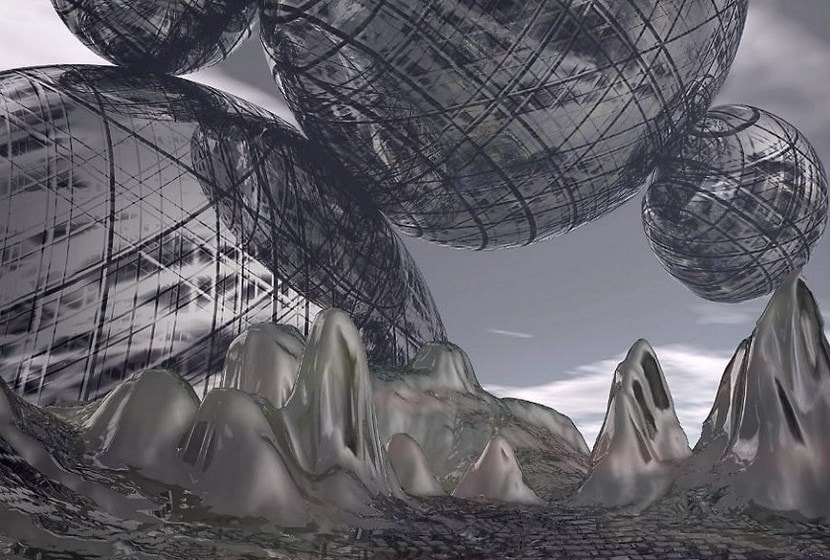Les progrès de la science laissent aujourd’hui nos sociétés face au sentiment d’être à la croisée des chemins : des ruptures technologiques sont annoncées (nanotechnologies, biologie de synthèse, etc.) au moment où nos modèles de croissance économique semblent voués à se heurter aux limites physiques et environnementales de la planète. Alors que se multiplient les débats quant au modèle de développement le plus souhaitable, en quoi la science-fiction et les regards qu’elle porte sur notre société peuvent-ils enrichir la réflexion ?
La présente analyse explore les différents âges de la Science-Fiction, de ses débuts jusqu’à aujourd’hui, et tente de mettre en lumière le contexte à la fois scientifique et socio-économique de chaque époque, par une approche chronologique. Voici la deuxième partie.
Deuxième partie : l’entre-Deux-Guerres / Une humanité plus puissante grâce aux technologies, mais de plus en plus déshumanisée
 1 – Pulp magazines, récits de super-héros et space operas
1 – Pulp magazines, récits de super-héros et space operas
L’entre-deux-guerres est riche d’avancées scientifiques et techniques. La période correspond aux premières fusées, à l’émergence de moyens de transport de plus en plus rapides (moteur à explosion pour le transport terrestre et progrès de l’aviation), à la diffusion de la théorie de la relativité générale d’Einstein (1915), de ses conséquences théoriques et de ses applications ultérieures en cosmologie (modèles d’univers, trous noirs, etc.).
 C’est dans ce contexte que se déploya l’imagination des auteurs de pulp magazines, périodiques bon marché très populaires auprès des adolescents américains. Hugo Gernsback, grand admirateur de Jules Verne, fut le premier à avoir l’idée de créer un magazine spécialisé dans les récits de nature scientifique. En 1926 il fonda Amazing Stories, sous-titré « The magazine of Scientifiction ». Toutes les formes de littérature – western, policier ou récits d’aventure – s’affichent dans ces publications. En 1920, plus de cent vingt titres se partageaient le marché américain, et attiraient près de dix millions de lecteurs.
C’est dans ce contexte que se déploya l’imagination des auteurs de pulp magazines, périodiques bon marché très populaires auprès des adolescents américains. Hugo Gernsback, grand admirateur de Jules Verne, fut le premier à avoir l’idée de créer un magazine spécialisé dans les récits de nature scientifique. En 1926 il fonda Amazing Stories, sous-titré « The magazine of Scientifiction ». Toutes les formes de littérature – western, policier ou récits d’aventure – s’affichent dans ces publications. En 1920, plus de cent vingt titres se partageaient le marché américain, et attiraient près de dix millions de lecteurs.
Encore inconnus du grand public, les plus grands maîtres du genre ont fait leurs premiers pas dans les pulp magazines : Robert Heinlein, Isaac Asimov, A.E. Van Vogt, Clifford D. Simak.
 Les super-héros apparaissent : Doc Savage (Doc Savage Magazine, 1933), «L’Homme de bronze», prédécesseur de Superman (créé en 1932 (12)). La maison d’édition Timely Comics, qui deviendra l’actuelle Marvel Comics, s’inspire du succès de ce dernier personnage et crée plus tard, essentiellement après la Seconde Guerre mondiale, une palette de super-héros qui fera son succès international. Les pouvoirs de ces personnages sont issus de muta- tions génétiques (les X-Men) ou sont acquis lors d’expé- rimentations scientifiques, par accident (Spider-man, Hulk, les Quatre Fantastiques), ou intentionnellement (Captain America, Iron Man).
Les super-héros apparaissent : Doc Savage (Doc Savage Magazine, 1933), «L’Homme de bronze», prédécesseur de Superman (créé en 1932 (12)). La maison d’édition Timely Comics, qui deviendra l’actuelle Marvel Comics, s’inspire du succès de ce dernier personnage et crée plus tard, essentiellement après la Seconde Guerre mondiale, une palette de super-héros qui fera son succès international. Les pouvoirs de ces personnages sont issus de muta- tions génétiques (les X-Men) ou sont acquis lors d’expé- rimentations scientifiques, par accident (Spider-man, Hulk, les Quatre Fantastiques), ou intentionnellement (Captain America, Iron Man).
Le space opera est l’autre genre qui naît des pulp magazines. Apparenté à l’épopée, il déroule des récits d’aventure situés dans l’espace, ou sur d’autres planètes. Edward Elmer Smith est le premier à situer ses intrigues dans la galaxie. Il est également le premier à avoir développé un cycle de plusieurs romans (Fulgur, 1928-1954, in Astounding Stories). La fierté nationale et un certain sentiment de puissance de la société américaine après la victoire de 1918 se retrouvent dans ses romans. Les empires galactiques qu’ils mettent en scène écrasent leurs ennemis extraterrestres avec l’assurance d’incarner le Bien et poursuivent la conquête de l’Ouest dans les espaces stellaires. D’ailleurs, certaines intrigues des premiers space operas sont le décalque de celles déjà utilisées dans les pulps spécialisés. Le space opera, dont l’exemple le plus connu est alors Flash Gordon, relève à cette époque de récits caricaturaux.
 « Tintin », héros de la SF européenne ? Équivalent lointain des pulps américains pour son succès auprès de la jeune génération et son mode de publication périodique, la bande dessinée s’en rapproche également par les sujets d’anticipation qu’elle aborde. Tintin, publié pour la première fois en 1929 dans le supplément du journal belge Le XXe siècle, est ainsi marqué par des interrogations relatives au progrès.
« Tintin », héros de la SF européenne ? Équivalent lointain des pulps américains pour son succès auprès de la jeune génération et son mode de publication périodique, la bande dessinée s’en rapproche également par les sujets d’anticipation qu’elle aborde. Tintin, publié pour la première fois en 1929 dans le supplément du journal belge Le XXe siècle, est ainsi marqué par des interrogations relatives au progrès.
Les avancées scientifiques et technologiques, au cœur de l’intrigue, donnent lieu à des débats ou à des démonstrations et sont souvent le fait du professeur Tournesol. Celui-ci devient, au fil des aventures de Tintin, un personnage récurrent : le voyage spatial d’Objectif Lune (1953), double album paru quinze ans avant la mission Apollo 11, précédant le lancement de Spoutnik I, en est sans doute la meilleure illustration.
Comme nombre d’auteurs de SF, Hergé extrapole à partir des découvertes scientifiques de son temps. Le réalisme frappant de son scénario est dû à une étude approfondie de l’Astronautique (1950) d’Alexandre Ananoff. Avec précision, il représente les conditions de l’apesanteur, l’attraction des corps astraux. Dans Tintin, pas de monstres extraterrestres fantaisistes, pas de paysages incroyables : d’après les astrophysiciens Lehoucq et Mochkovitch(13), la trajectoire de la fusée lunaire reproduit un plan de vol tout à fait réaliste.
Tintin explore d’autres domaines de la science : de l’existence d’extraterrestres dans Vol 714 pour Sydney (1968) à la télévision couleur, alors à ses débuts, que le professeur Tournesol s’évertue à mettre au point dans Les Bijoux de la Castafiore (1961). Le film Tintin et les Oranges bleues (1964) – qui n’a pas été scénarisé par Hergé – évoque la création de ce qui s’apparente à des organismes génétiquement modifiés.
2 – L’organisation scientifique du travail transforme l’homme en machine
 L’industrialisation est le moteur de la croissance. C’est aux États-Unis que l’industrie progresse le plus rapidement. L’essor de la Manufacturing Belt, zone de développement de l’industrie lourde dans le Nord-Est, a ainsi engendré une très forte urbanisation dont New York fournit le meilleur exemple. Ce mouvement s’est accompagné de mutations profondes de la ville (gratte-ciel, concentration des logements ouvriers, métro, tramway, éclairage, etc.) et de la vie en société (arrivées massives d’immigrants, inégalités sociales, densification, crises sanitaires, etc).
L’industrialisation est le moteur de la croissance. C’est aux États-Unis que l’industrie progresse le plus rapidement. L’essor de la Manufacturing Belt, zone de développement de l’industrie lourde dans le Nord-Est, a ainsi engendré une très forte urbanisation dont New York fournit le meilleur exemple. Ce mouvement s’est accompagné de mutations profondes de la ville (gratte-ciel, concentration des logements ouvriers, métro, tramway, éclairage, etc.) et de la vie en société (arrivées massives d’immigrants, inégalités sociales, densification, crises sanitaires, etc).
 La recherche du rendement industriel est alors le maître mot : elle est alimentée par l’innovation technologique, l’émergence de marchés de masse (26 millions d’Américains ont la radio en 1937(14), les premiers téléviseurs à tube cathodique sont commercialisés) et par une nouvelle organisation du travail. Ce dernier point fut particulièrement déterminant.
La recherche du rendement industriel est alors le maître mot : elle est alimentée par l’innovation technologique, l’émergence de marchés de masse (26 millions d’Américains ont la radio en 1937(14), les premiers téléviseurs à tube cathodique sont commercialisés) et par une nouvelle organisation du travail. Ce dernier point fut particulièrement déterminant.
C’est d’abord F.W. Taylor qui recommande une « organisation scientifique du travail » fondée sur la meilleure façon de produire (définition, délimitation et séquençage des tâches), et de rémunérer l’ouvrier (passage du salaire à la tâche au salaire horaire). Ford s’inspire de ce modèle pour mettre au point des chaînes d’assemblage pour l’industrie automobile, basées sur la rationalisation et la standardisation des tâches des travailleurs. Malgré son succès, le fordisme, qui fut utilisé pour parer à la crise économique de 1929, ne traverse pas l’Atlantique avant la Seconde Guerre mondiale.
 Aussi, lorsque le cinéaste allemand Fritz Lang découvre New York en 1924 à l’occasion d’un voyage d’affaires, le décalage est tel qu’il en fait la principale source d’inspiration de son film Metropolis (1927)(15). Cette œuvre présente une ville aux dimensions démesurées surplombant une ville ouvrière souterraine. L’homme y est esclave des machines qui donnent vie à la grande métropole. L’image de l’aliénation à la technologie et de la mégalopole mécanisée y est très forte.
Aussi, lorsque le cinéaste allemand Fritz Lang découvre New York en 1924 à l’occasion d’un voyage d’affaires, le décalage est tel qu’il en fait la principale source d’inspiration de son film Metropolis (1927)(15). Cette œuvre présente une ville aux dimensions démesurées surplombant une ville ouvrière souterraine. L’homme y est esclave des machines qui donnent vie à la grande métropole. L’image de l’aliénation à la technologie et de la mégalopole mécanisée y est très forte.
Le thème de la déshumanisation par l’organisation scientifique du travail inspire une autre œuvre d’anthologie. Dans Les Temps modernes (1936), Charlie Chaplin est un ouvrier qui voit les boulons défiler à la chaîne sur son poste de travail, illustration du caractère décérébrant de la répétition de la tâche : pris dans l’engrenage, Charlot ne peut s’arrêter, même pendant les pauses.
Le risque de l’aliénation de l’homme par la technologie inspire nombre d’auteurs, les deux plus connus étant Huxley et Orwell. Dans Le Meilleur des mondes (1931), les techniques de sélection génétique permettent de rationaliser les aptitudes au travail des différentes castes de la population et de produire un nombre précis de personnes pour chaque fonction de la société. Dans 1984 (1948), les « télécrans » observent et diffusent de l’information en continu, de sorte que les pulsions de l’homme sont canalisées et maîtrisées. Dans ces œuvres, la technologie est au service d’un petit nombre d’individus qui l’utilisent pour soumettre le reste de la population. Les relations entre individus ou entre groupes sont réduites à néant pour le maintien de la paix. Les inégalités sociales sont très fortes, la technologie étant sous le seul contrôle des nantis.
Cette image de la société reflète en partie celle de l’époque : une poignée de riches industriels maîtrise alors l’économie et la politique de pays entiers. En 1936, au Royaume-Uni, 10 % des Britanniques les plus aisés possèdent 88 % du patrimoine privé national et 1 % en possèdent 56 %. Le nombre de chômeurs est par ailleurs resté supérieur à 1 million sur une population active d’environ 20 millions de personnes au cours de l’entre-deux-guerres (16).
(12) « The Reign of the Super-man », Science-Fiction, n° 3.
(13) Voir Lehoucq R. et Mochkovitch R. (2003), Mais où est donc le temple du soleil ? Enquête scientifique au pays d’Hergé.
(14) http://scientia-universi.net/tpe/entre_deux_guerres.php
(15) Lemieux P. (2001), « Métropolis revisitée », Ciné-Bulles, vol. 19, n° 4, p. 42-45. http://id.erudit.org/iderudit/33719ac.
(16) Mougel F.C. (2005), « La mondialisation à l’anglaise dans l’entre-deux-guerres : stratégie planétaire ou repli impérial ? », Relations internationales, 2005/3, n° 123, p. 37- 50. DOI : 10.3917/ri.123.0037.












